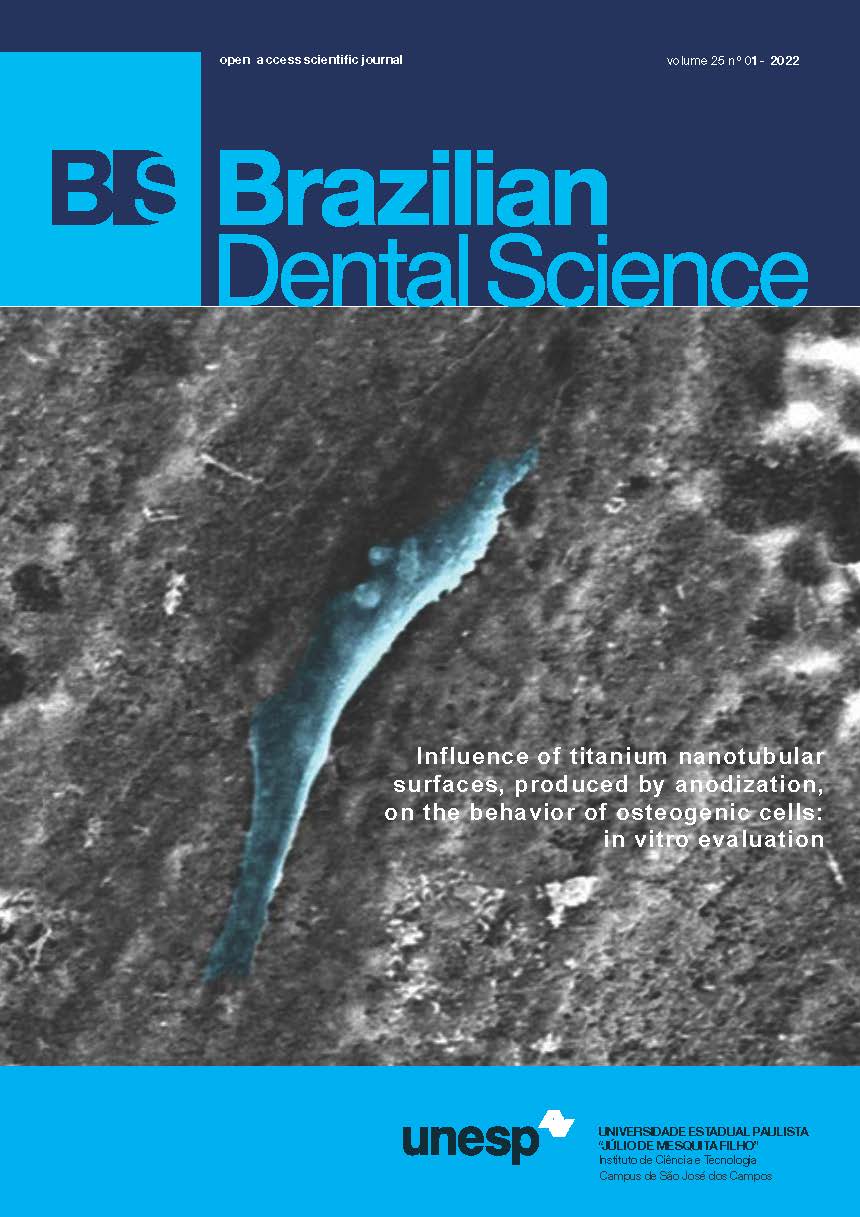Influence of photobiomodulation and tricalcium silicate-based cement on viability and dentinogenic activity of cultured human dental pulp stem cells
DOI:
https://doi.org/10.4322/bds.2022.e2497Abstract
Objective: To assess the effect of application of Biodentine (BD), Photobiomodulation (PBM) using 810 nm diode
laser and both on the proliferation and odontogenic differentiation of human dental pulp stem cells (HDPSCs).
Material and Methods: HDPSCs were collected, isolated, and characterized and then divided into six groups:
groups 1, control; groups 2, biodentine (BD); group 3, irradiation at 1 J/cm2 of 810-nm diode laser; group 4,
irradiation at 1 J/cm2 and culture with BD; group 5, irradiation at 2 J/cm2, and group 6, irradiation at 2 J/cm2
and culture with BD. Viability assay was measured through MTT assay and Alkaline phosphatase (ALP) enzyme
activity and mRNA levels of RUNX2, collagen 1 (Col-1) and BMP2 were also assessed. Results: Photobiomodulation
at 1 and 2 J/cm2 combined with biodentine significantly promoted HDPSCs proliferation (in MTT assay results)
and odontogenic differentiation (through the gene expression of RUNX2, Col-1 and BMP2 levels (p < 0.05).
Conclusion: Photobiomodulation at 2 J/cm2 combined with biodentine enhanced proliferation and odontogenic
differentiation of cultured HDPSCs and thus could further be beneficial for dentin regeneration.
KEYWORDS
Human dental pulp stem cells (HDPSCs); PBM; BMP2; RUNX2; COL1.
Downloads
Downloads
Published
Versions
- 2022-03-29 (4)
- 2022-01-21 (3)
- 2022-01-18 (2)
- 2022-01-18 (1)
How to Cite
Issue
Section
License
Brazilian Dental Science uses the Creative Commons (CC-BY 4.0) license, thus preserving the integrity of articles in an open access environment. The journal allows the author to retain publishing rights without restrictions.
=================




























